PowerPoint Slide Formats – 16:9 or 4:3 or other?
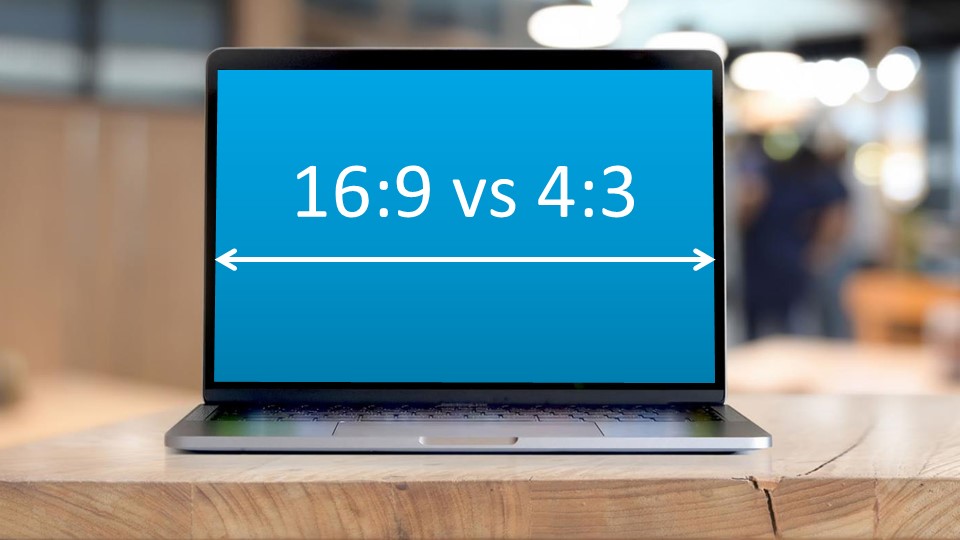
Do you have a presentation in classical 4:3 format? Are you considering whether to change it to widescreen format (16:9)? Or maybe you are creating a presentation offer that you want to print on A4 paper sheets? Let me show you how and when change slide proportions and how to use untypical presentation formats.
As a professional slide designer I use PowerPoint in various formats. Pretty often I help clients to update their PowerPoint templates, transitioning from older classical 4:3 proportions to 16:9 format. This widescreen format is new standard and many companies don’t use standard 4:3 anymore, or use both versions.
Which slide format is better 4:3 or 16:9?
What are pros and cons of those formats? This a question I get a lot on our slide design training.
A widescreen format 16:9 (sometimes called also panorama format) got more popular because businesses tend to present slides on a screen displays more and more. Be it webinars, online conferences, Zoom calls or meetings rooms with bit TV instead of overhead projectors.
Additionally, the 16:9 format is default in the current PowerPoint. Therefore if you open new presentation from scratch it will have those widescreen size.
Having a wider slide format seems to offer more slide space to fit more elements. It’s a subjective feeling we have because we tend to use space width more then height. Well, adding more elements is not always better. Here you can compare the look of those two formats:
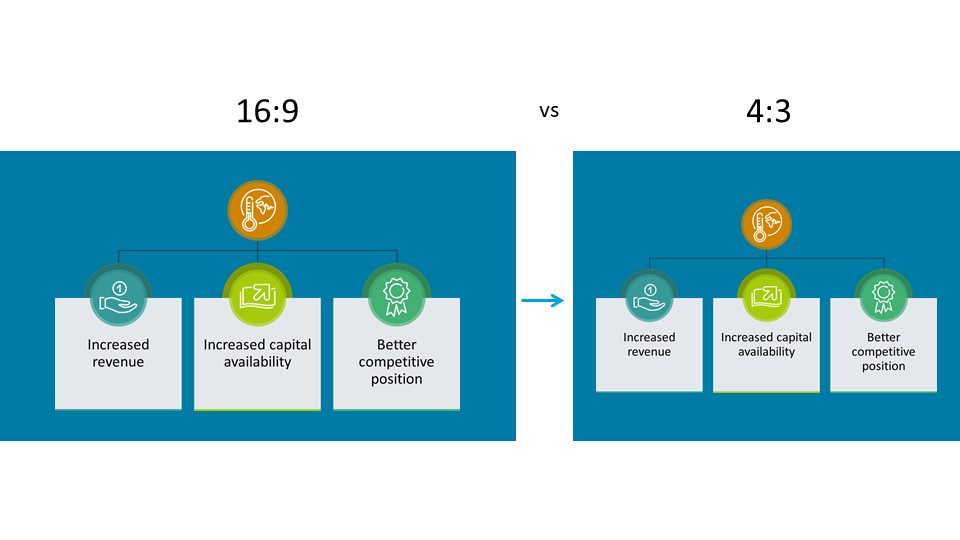
OK, so widescreen is prevailing now, but does 4:3 slide format has some advantages at all?
Standard 4:3 proportions works better when you present your slides on overhead projectors. I still see that the most standard projectors present in various conference rooms over hotels and smaller conference venues still use 4:3 proportions.
Another benefit of 4:3 format is printing. If you want also to print out your slides e.g. on A4 paper sheets, then 4:3 format will fit better than 16:9. And that covers both printing cases – whether you print one slide per paper sheet or printing more slides per sheet, e.g. 6 slides together – they still fit better inside A4 (or similar proportions) paper.
Let me sum it up:
Pros of widescreen 16:9 PPT slide format
- Better for presenting on laptop screens and wide TV displays
- Seemingly more space for graphics
- Modern (default format in new PPT)
Pros of standard 4:3 PPT slide format
- Better when using standard overhead projectors
- More suitable for printing out the presentation – you can fit them better so printed slides will be bigger and more readable.
How to change slide format in PowerPoint
I am using here MS Office 365 but older Office versions have the same or very similar place where you can change the slide format.
To change format of a slide in PowerPoint, go to Design tab in the top menu, then choose Slide Size icon:

You will see two options Standard (4:3) and Widescreen (16:9). Choose the preferred format.
Switching format will pop up a window asking you how to fit existing slide content to new format – whether to fit everything in (making graphics smaller) or maximize the content look (some elements will be out of the slide region).

The resizing will change proportions of slide content elements correctly, but elements of the template (Slide master) can get stretched unnaturally. And people often have graphical elements in the template such as logo picture or other background graphics. In such a case you need to correct them manually. See example below with our logo stretched:
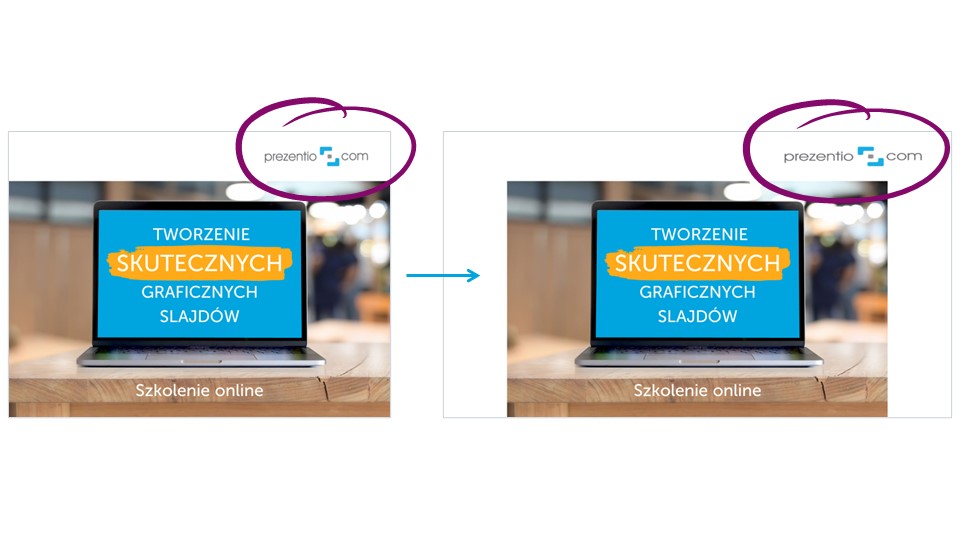
Another untypical slide formats and their use
PowerPoint became the tool I use not only for presentations design but also for creating sales offers, training handouts, infographics, leaflets or one-pager documents. So for me the PowerPoint often replaces text editors such as Word, video editing apps or even Adobe Illustrator for making simple infographics.
Did you know you can use it for making a nice visual job resume made solely in PowerPoint (link to our library of such CVs or see examples below)? Creating a resume for a job application in PowerPoint allows you to add graphics and control their position much easier than using Word.
For those alternative applications of PowerPoint I often change the slide format to less custom one.
Explore below document examples made in PowerPoint that used atypical slide format:
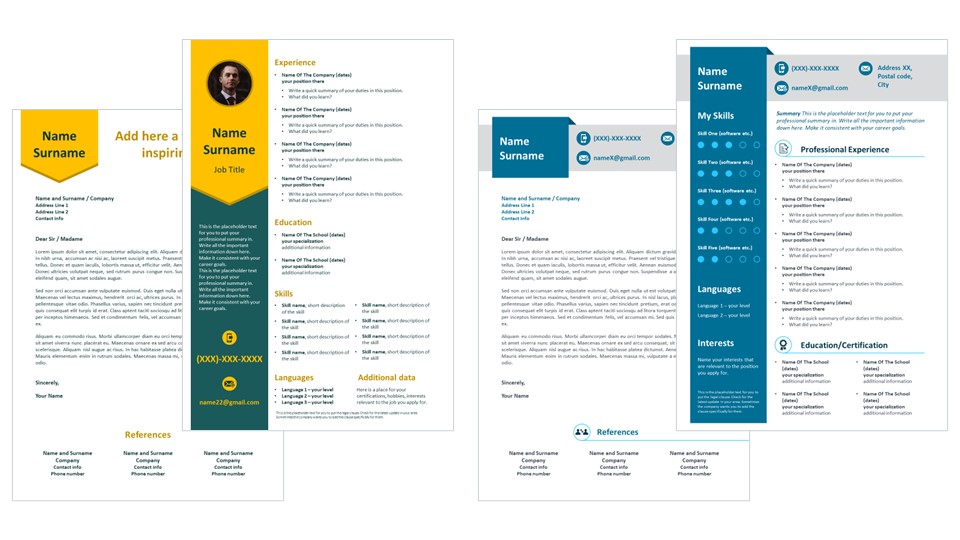
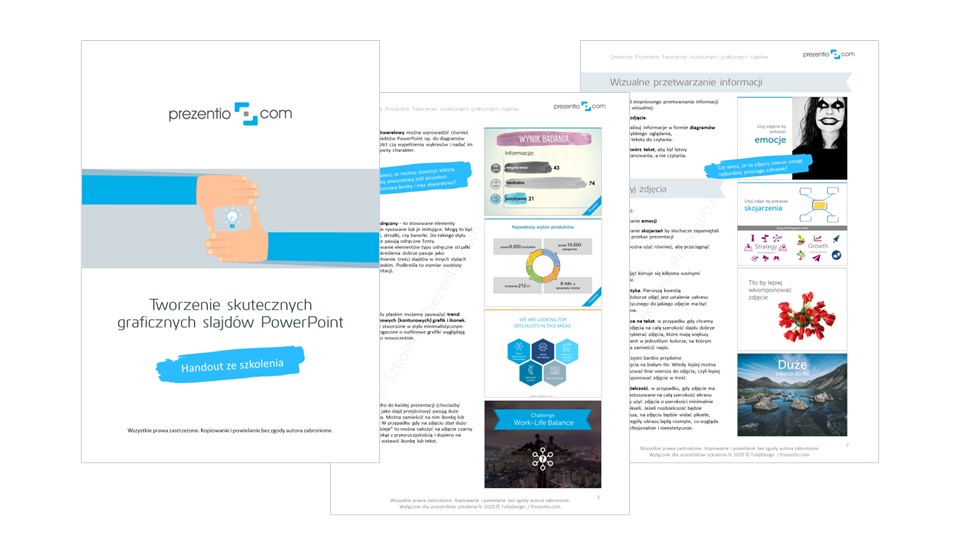


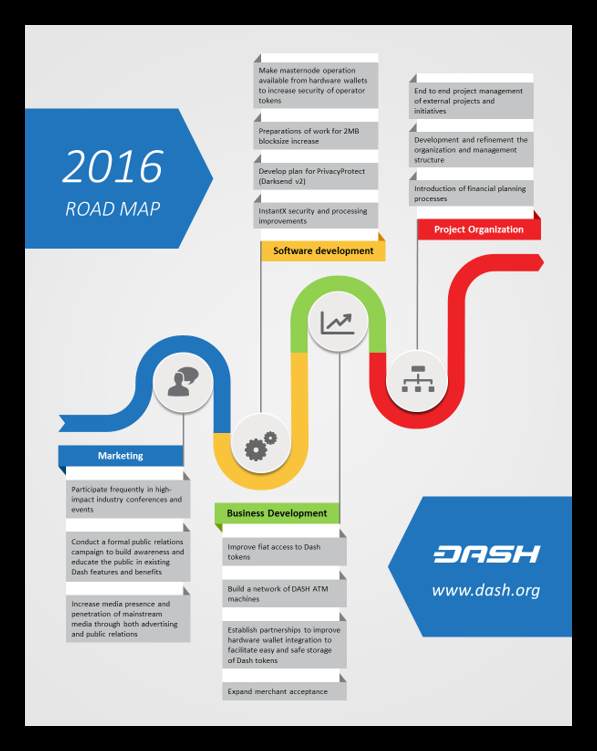
How to change PPT slide format to custom size?
To create a PowerPoint slide with custom dimensions, select from top menu the Design tab and there choose Slide Size icon. The last option there is Custom Slide Size….

This will open you a window where you can specify width and height of the slide or choose one of the predefined format instead of Widescreen, e.g. A4 or B5. You can also switch here the slide orientation to Portrait to create a slide looking like a Word document, for example.

PowerPoint as universal tool for visual documents
As you can see, PowerPoint can be really flexible tool you can use not only for slides. You can create any document where you want to use graphical elements, various layouts and have freedom of easy editing. Here are some ideas where you can try to use PowerPoint
- One-pagers that you can print out
- E-book design that you can later export as PDF document
- Marketing leaflets
- Simple infographics that you can save as PNG or JPG and publish on website
- Training handouts
- Short instruction documents with place for screenshots, flowcharts
- Writing a CV
- Diagram editor
- Creating a postcard design
- Social media graphics – e.g. simple banners
- Webpage drafts
Good luck getting creative.
Learn more tricks about advanced PowerPoint. Check our online training “Visual PPT Slides Design” content and calendar.
Peter,
Slide Designer, Trainer, Co-founder of Prezentio.
Follow me on my LinkedIn profile for data visualization examples and tips.
